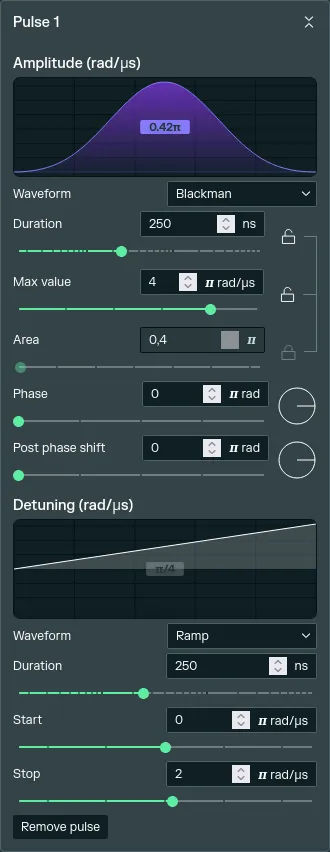Pulse sequence
Pulse shaping
Section titled “Pulse shaping”In theory, a neutral atom-based quantum device is able to function both in a digital setting — working with quantum logic gates to implement any kind of quantum algorithm — and in an analog setting — interacting with all the atomic register to transmit energy to all the qubits in the system. Pulser Studio implements the latter, analog quantum computing paradigms, wherein we are interacting with the atomic register via specifically designed laser pulses.
Therefore the next big step with an implementation is the so-called pulse shaping, transforming the (mathematical) problem at hand into a language understandable by a neutral atom device. This translation is typically a two-step process:
- First the problem we investigate gets reformulated so that the aforementioned energy, a so-called Hamiltonian appears.
- After this, the obtained construct has to be transformed into a series of laser signals, this passage can be more or less straightforward based on the complexity of the problem.
Pulse sequence
Section titled “Pulse sequence”
In Pulser Studio, pulses are managed on the Channels panel. It offers a timeline view of the sequence of pulses, as they will be executed by the device, and a visualization of the main characteristics of each pulse, such as waveform, amplitude, phase and detuning.

Pulses can easily be created, duplicated or removed by right-clicking the timeline graph, and moved by drag-and-drop.
When creating a new pulse, default values will be assigned, that you can fine-tune in the Pulse panel of the right sidebar, until you get the pulse necessary for your problem.
